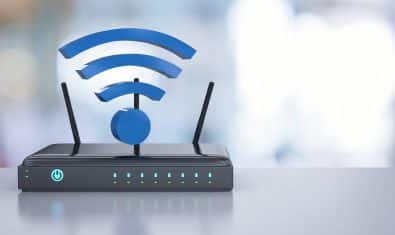By Dr. Qamar Munir
Optical Communication i.e. using light for transmitting voice signal was first experimented by Alexander Graham Bell in 1880. He then used a device — that I call a Photo-phone — in which he modulated his voice into light signal mechanically using some sort of flexible mirror and sun as a light source. At the remote end selenium, a semiconductor, which varied it’s electrical resistance with the intensity of light was used as a detector to convert back the light signal into sound. However Bell’s work didn’t result into a viable commercial product as the only strong light source available to him at that time was the sun and air as the media for transport of light signal. Both had serious limitations for becoming part of any reliable optical communication device. Graham Bell’s work though inspired me to work on a photo acoustic sensing device using optical fibre, which was the start of my journey in the ever expanding world of optic fibres.
It was with the invention of semiconductor lasers and subsequently optic fibres that Optical Communication found got an impetus again in 1970s. Today we can claim that Fibre Optic Communication has changed the life of nearly every person living on this planet. The huge amount of data generated either in the form of e-mails or videos is practically carried right from our doorstep to destinations lying thousands of kilometres away within no time using mostly optical fibre links all along the route.
The huge bandwidth of the order of Terabits available today in Optical Fibre Communication Systems as compared to other transmission technology using either multiple copper wires or microwaves was the key to the development of providing multiple value added services like voice, data, video, IPTV etc simultaneously to the customers.
Fibre Optic Cables are today crisscrossing the oceans, land, deserts and mountains connecting the continents and countries around the world.
Pakistan started with the deployment of optical fibres both in the long distance and local areas networks for domestic applications as early as 1989 and connected today even via submarine optical cables to the rest of the world. Pakistani citizens living in big cities today enjoy the same level and type of services provided to citizens of any developed country like France, England, Germany and USA, without taking into account blocking of certain websites by the Government under one pretext or another. The main reason is the price of fibre optic cables which have continuously decreased over the last couple of decades. Pakistan also has a local fibre optic cable manufacturing plant.
People do talk a lot about competing technologies like microwaves or satellites, however they are in no comparison with respect to cost and capacity to fibre optic. Microwave does have an edge over fibre in difficult hilly or mountainous, desert or swamps terrains due to the ease and speed of deployment. On the other hand influence of climate and availability of frequency spectrum cannot be simply ignored, although a proper planning of the link can help to minimise these effects.
According to the experts’ opinion, 4G/LTE mobile networks are better served by planning small cells using Micro and Pico base stations especially in congested areas of large cities and towns so called metro areas. These base stations which can be installed on lamp-posts, traffic signals, utility towers, buildings etc. would require optical fibre or multiple copper pair bundled SHDSL links for mobile backhaul as there won’t be any line of sight available for a microwave link for such sites.
For remote locations, difficult and hilly terrains as well as low populated areas microwave will continue to play its role as a leading mobile backhaul technology even in case of 4G/LTE.
The graph below show that Fibre Optics Network share in the mobile backhaul has been gradually increasing whereas the share of Microwave Network has slightly decreased.

Broadband Services using Optic Fibre can play a key role in improving the living standards in these areas. Universal Services Fund or USF as it is commonly known has played a key role in achieving this goal since it was created in 2006. Pakistan has nearly 6000 Union Councils (UC) in the country. The main aim of USF has been to provide basic telephony and data services in remote and undeveloped areas of Pakistan. Its main emphasis has been to connect if possible via Fibre Optic links all UC headquarters.
Below is a discussion of few important applications of such links with examples as to how it can help in improving the living standards of the people residing in those remote and rural areas.
Tele-Education
The population of Pakistan has more than tripled over a span of 66 years. Being an agricultural country a big majority of our people are still living in rural areas. However due to lack of schools and teachers quite a substantial number of people in rural areas are still illiterate. The literacy rate in the country is still around 50%.
A broadband link can help overcome the problem of the lack of teachers by remotely conducting a class (single location) or classes (multiple locations) in the specialized areas of science and mathematics. Such a facility must not be just limited to high school or intermediate level. With today’s technological capabilities it is absolutely not an issue to conduct an interactive class in a village from a remote location, such as a big town or city.
The purpose is not only to provide an education in a particular field rather the same quality of education as available to the students in cities like Karachi, Lahore, Quetta, Multan, Islamabad or Peshawar. The same setup can also be used for adult education both for men and women. USA have already initiated similar programmes with the help of US Department of Education (ED), Federal Communications Commission (FCC) and Rural Utilities Service (RUS). To support rural the national goal of broadband connectivity in rural schools and community centres in USA funding resources are available from FCC School and Libraries/E-Rate Program, Universal Services Fund now known as Connect America Fund and Broadband Technology Opportunities Program (BTOP) to name a few.
Similarly both in UK and Australia Community and Distance Learning Projects for rural areas have been launched with great success during the last few years. One of the aims of such projects in Australia was to provide education to aboriginals, who still prefer to live in remotely located villages and towns. Rural and Remote Education has provided help not only to the students rather also the teachers, who benefit in getting professional advice from their counterparts in bigger towns and cities.
Telemedicine and telehealth
Telemedicine is the use of telecommunication broadband services in providing not just essential rather also life saving medical services to the people living in distant rural communities. If the electronic information and broadband telecommunication technologies are used to support long distance clinical healthcare, patient health related education and public health administration, it is known as telehealth. In other words telehealth refers to a broader scope of remote healthcare services than telemedicine.
Telemedicine according to American Telemedicine Association (ATA) is in practise for over forty years. However it got the impetus with the start of broadband services via Optic Fibre few years ago such as data, video and IPTV. Bloomberg Businessweek in an article on telemedicine reported that 10 million American benefited directly by Telemedicine over a period of 12 months from 2012 to 2013. According to this article high quality images provide enough details for medical professionals to make diagnoses.
India is using Satellite based communication techniques such as VSAT (Very Small Aperture Terminal) system for providing telemedicine to some rural and remote areas. Patient information and medical images are mostly sent in advance to the specialist doctor. Real Time Imaging via VSAT is a tedious and time consuming process due to bandwidth limitations. Images are sent in the form of Digital Data Packets. These images once received at the specialist centre must be reconstructed (additional time, hardware and software required) so that the specialist doctor can perform the diagnosis and suggest appropriate treatment.
World Health Organisation (WHO) in its report ‘Telemedicine, Opportunities and developments in Member States’ has also acknowledged the benefits of telemedicine / telehealth in providing clinical support by using various types of information and communication technologies to overcome the geographical barriers in order to improve the health outcome of the people. Industrialized countries e.g. UK, Scandinavia, North America and Australia are using telemedicine not only to provide the diagnosis and clinical treatment of most common illnesses to people living in remote areas but also to remotely monitor (heart rate, blood pressure, blood glucose level etc.) and manage patients with acute and chronic illnesses.
According to one of the BBC report telemedicine has provided immense benefits to the aged population living in the remote location as they can in some cases avoid taking long and sometime cumbersome journey to the next nearly located medical facility. Lack of adequate broadband services in many remote locations but also a complex of human and cultural factors are the main reasons hindering the wide spread use of telemedicine in many developing countries according to WHO report. Pakistan can greatly benefit from telemedicine, provided it embarks on the long advocated Fibre to the Union Council projects.
E-Agriculture
Agriculture is playing an important role in the economy of world and Pakistan. With the increase of population worldwide there is an increased demand of food. The limited resources available such as land and water must therefore be efficiently used to increase the yield. Majority of our population is still living in villages and earns their livelihood by growing crops and raising livestock. Information and Communication Technology plays an important role in providing relevant information to the farmers e.g. when and what type of pesticides and fungicides must be used or at what stage the fertiliser be given, when and what type of vaccination for the livestock is required. Lack of education in farmers have resulted in either excessive or inadequate use of pesticides, fungicides, fertilizers etc resulting in bad crop. Moreover the requirement varies according to region, weather conditions, type of soil etc. A targeted approach can help the farmers in achieving the desired results.
Agriculture and Rural Development Department (ARD) of the World Bank has initiated efforts in the use of ICT in agrarian livelihood. An e-book called ‘ICT in Agriculture’ released by ARD in November 2011 provides numerous case studies, examples, guiding principles and lessons learned by applying ICT in Agriculture. The ever increasing urban population and increasing awareness among consumers regarding quality and safety of the food has forced retailers such as Wal-Mart, Carrefour, food processors such as Nestle, Unilever, Kraft, Suppliers of seeds, fertilizers, pesticides, irrigation and farming equipment and machinery such as Bayer, Syngenta, John Deree to have a direct contact with smallholders and farmers by eliminating or reducing the number of intermediaries. ICT here has played and will continue to play an important role allowing companies to reduce the prices and improve quality control.
Few relevant applications of a broadband link using optic fibre have been highlighted above that are going to play an important role in improving the life of people living in rural and remote areas. There are many more applications such as e-banking, online application for National Identity Card, online shopping etc. that can follow or can accompany the main objectives. Funding for such projects are also available from multiple sources. Universal Services Fund, World Bank, Development Funds from Western Countries made available to Pakistan etc. can be effectively utilised provided Pakistan has a clear policy in this regards.
Participation of the local people, organisations and the union council, in whichever way it may be possible, is extremely important in order to achieve the desired results. It can be a help in digging trenches for Optic Fibre Cable in areas within the Union Council jurisdiction and/or in providing the ancillary infrastructure (building, equipment for Tele-education, telemedicine). It is also important to have some trained local people in relevant areas like paramedics and nurses, teachers for basic education, technicians to handle the equipment and medical laboratories to carry the basic tests. In the absence of rail and road infrastructure, schools and colleges, clinics and hospitals, broadband services on fibre optic can help a lot in the development of our rural areas. It will help in increasing the awareness among the rural population and in the economic and political stability of the country.
Writer is a Ph.D. in Lasers and Optoelectronics from the Technical University of Vienna, Austria and an M.Sc. in Physics from Quaid-e-Azam University Islamabad. He has Worked as Project Manager with Siemens on the first PTCL Fiber Optic Project in Pakistan. His LinkedIn profile is available here.


























Pakistanis can read this and can say… hmmmmmm
Good article though!
tl;dr
only if you read it, you will understand why Pak really is in need of this, its a long project but if done right for century it will be perfectly fine to let it be.. but first we have to do it. we have to invest in our country, in out people to make a difference. how else we will grow and learn?
ye article hai ya final exam ka course ?
Excellent Article
Connecting Rural community with the world is very much important. Infect we will ignore 70% Pakistani development in ICT if don’t do that.Government need to announce the project on emergency basis for deployment of OFC in rural areas.